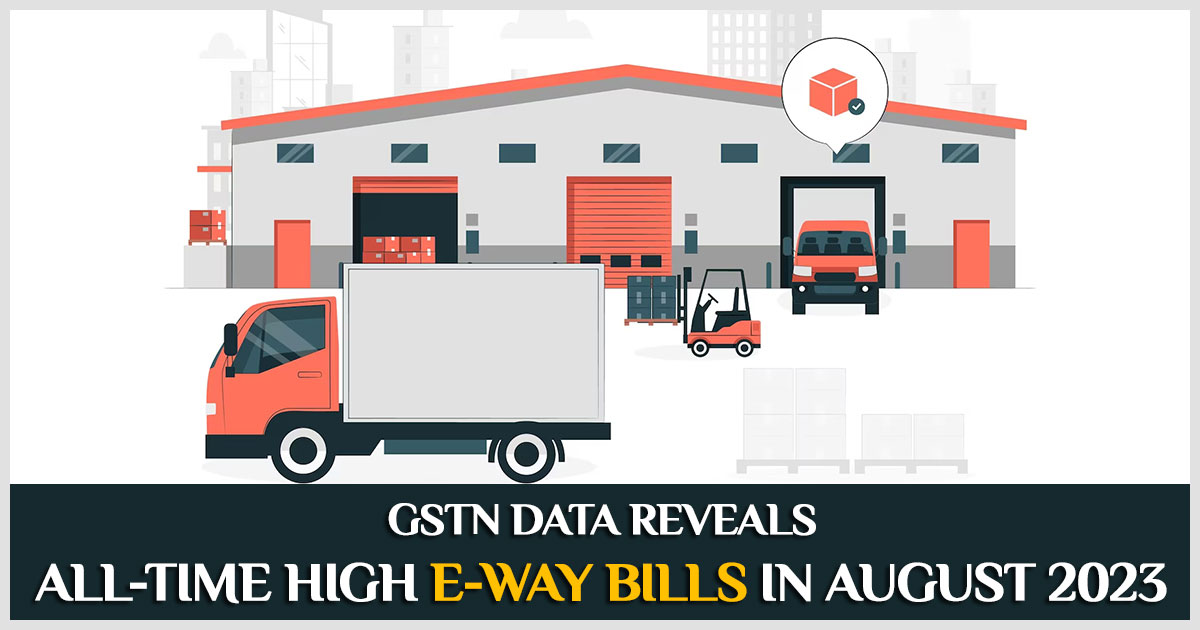
In August, there was a record-breaking number of 9.34 crore e-way bills generated, as per data from GSTN, the IT system for indirect taxes. This surpassed the previous high of 9.09 crore e-way bills in March of the same year.
While GSTN hasn’t specified the exact reasons for this surge in GST e-way bill generation, several factors appear to contribute. Companies are dispatching larger quantities of goods to meet the demands of festive seasons.
Additionally, the increasing number of registered taxpayers and improved compliance practices have led to higher e-way bill generation. The recovery in consumer demand has also contributed to increased movement of goods, resulting in more e-way bills being generated.
An e-way bill is an electronic document that confirms the movement of goods and indicates whether the appropriate taxes have been paid. According to Rule 138 of the CGST Rules, 2017, any registered person causing the movement of goods with a consignment value exceeding ₹50,000 must generate an e-way bill. This requirement applies to movements both between states and within a state. However, individual states or union territories with legislative powers can set their own thresholds for intra-state movements.
While the surge in e-way bill generation may impact revenue collection, historical data suggests that higher e-way bill generation typically leads to increased tax collection. For instance, when e-way bill generation exceeded 9 crore in March, it resulted in a record tax collection of ₹1.87 lakh crore in April. Subsequently, as e-way bill generation decreased to 8.44 crore in April, tax collection in May was ₹1.57 lakh crore.
Read Also: Gen GST E Way Bill Software: A Complete E Waybill Solution For Suppliers & Transporters
Similarly, e-way bill generation rose to 8.79 crore in July, but tax collection in August decreased to ₹1.59 lakh crore. It’s worth noting that the movement of goods may occur in the same month as consumption or even a month prior, which can explain why e-way bill generation may affect tax collection over a two-month period.
The rise in e-way bill generation is a clear indicator of robust GST collections, as seen in recent months. The upcoming festive season is expected to boost economic activity and transactions, which will have a positive impact on the overall economic situation. It suggested that this surge in e-way bills could lead to substantial GST tax collection in September.
Simultaneously, the coinciding report about increased manufacturing activity (PMI data) suggests that businesses are gearing up for the festive season. Several factors contribute to this surge, including heightened compliance requirements and the accumulation of festive inventory. Furthermore, a lowered sales threshold for reporting wholesale transactions and improved goods shipments have played a role in this economic upturn.
For cautioning it’s essential to recognize that while increased e-way bill generation is a positive sign, overall economic conditions depend on various factors apart from this, including consumer spending, investment, and government policies.









